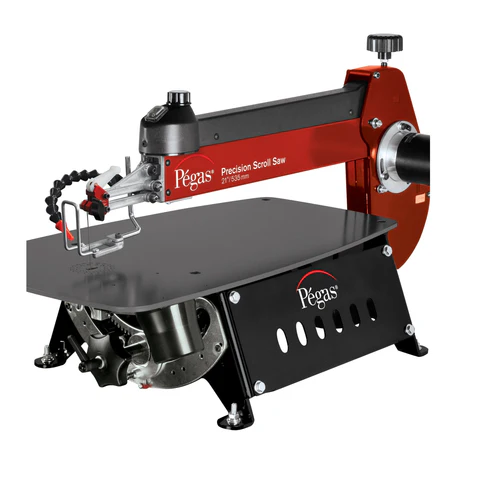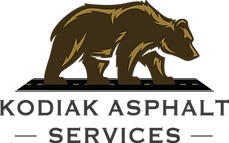When setting up a woodworking shop, one of the critical decisions you’ll make is choosing the right cutting tools. Among the most versatile and frequently used tools are scroll saws and band saws. While both saws are used for cutting various materials, their features, capabilities, and applications differ significantly. Understanding these differences can help you decide which one is best suited for your woodworking needs.
In this blog, we’ll dive deep into the pros and cons of both, highlighting their uses, performance, and limitations. Whether you’re a hobbyist looking to create intricate designs or a professional woodworker needing a reliable saw for thick stock cutting, this guide will help you make an informed choice.
Understanding the Scroll Saw
A scroll saw is a highly precise, electrically powered saw used primarily for making intricate and delicate cuts. It has a thin, fine blade that moves up and down, allowing the operator to make tight turns and highly detailed designs in wood, plastic, and even metal.
Key Features to Know About:
- Fine, Detailed Cuts: The most significant advantage is its ability to make extremely detailed and intricate cuts. The small blade enables tight curves and detailed work that other saws cannot easily accomplish.
- Easy Blade Changing: Most comes with a quick blade change
feature, making it easy to switch blades for different materials and cutting styles. This versatility is ideal for crafters and woodworkers who work on various projects.
- Speed Control: Scroll saws often come with variable speed settings, allowing the operator to adjust the cutting speed for different materials. This is crucial for achieving clean and precise cuts.
- Quiet Operation: Unlike larger, more powerful saws, scroll saws operate quietly, making them a good choice for home workshops or settings where noise is a concern.
- Limited Thickness: One limitation is that it can’t cut through very thick materials. Most scroll saws are best for stock up to 2 inches thick, making them ideal for light to moderate-duty projects.
Understanding the Band Saw
It is a much larger, more powerful tool used primarily for cutting thicker materials and making straight or curved cuts. It uses a continuous loop of a toothed blade, making it more robust and capable of handling thicker, harder materials than a scroll saw.
Key Features to Know About:
- Cutting Thickness: These are known for their ability to cut through thick stock, often as much as 6 inches or more, depending on the model. This makes them ideal for tasks such as resawing and cutting large pieces of lumber.
- Curved Cuts: While the saws can handle curves, they cannot achieve the same level of detail or precision as a scroll saw. However, they are better suited for cutting large, sweeping curves in thicker materials.
- Rough Cutting: Band saws are perfect for rough cutting and shaping materials quickly, especially when working with thicker or harder wood types.
- Continuous Blade Movement: The continuous blade movement of a band saw makes for smoother cuts and allows it to handle long, continuous cuts without the need for blade adjustments or pauses.
- Heavier and More Expensive: Band saws are typically larger, heavier, and more expensive than scroll saws, requiring more space in the workshop.
Pros and Cons
To make an informed decision, let’s break down the advantages and disadvantages of both saws, considering the specific needs of your workshop.
Pros of a Scroll Saw:
- Precision and Detail: Scroll saws excel at making delicate, detailed cuts that are ideal for intricate projects, such as jewelry boxes, ornaments, or scrollwork.
- Compact Size: Scroll saws are relatively small and lightweight, making them suitable for home workshops with limited space.
- Safer for Beginners: Because the blade moves up and down and is relatively small, scroll saws are generally safer for novice woodworkers.
- Great for Art and Crafts: The ability to create intricate patterns makes a scroll saw perfect for hobbyists who enjoy woodworking as a creative outlet.
Cons of a Scroll Saw:
- Limited Material Thickness: A scroll saw cannot handle thick materials, so it’s not the best choice for cutting through large blocks of wood or heavy-duty tasks.
- Slower Cutting Speed: The delicate nature of a scroll saw means it cuts slower compared to a band saw, which can handle tougher tasks more quickly.
Pros of a Band Saw:
- Versatile Cutting Ability: Band saws can handle a variety of cuts, from straight lines to wide curves, and can tackle thicker and harder materials.
- Speed and Power: Band saws are more powerful and can cut through thick materials much faster than scroll saws.
- Heavy-Duty Projects: If your woodworking involves cutting large pieces of lumber or resawing, a band saw is the best option.
Cons:
- Lower Precision for Fine Details: Band saws are less precise for intricate, delicate work compared to scroll saws, making them less ideal for projects that require detailed designs.
- Bulky and Expensive: Band saws are larger, heavier, and more expensive, making them less practical for smaller workshops or hobbyists who don’t need heavy-duty cutting power.
When to Choose?
It is the ideal choice for woodworkers focused on precision and detail. If your projects involve fine scrollwork, intricate patterns, or crafting decorative items, a scroll saw will offer the best control and accuracy. It’s particularly well-suited for hobbyists, artists, and those who work on smaller, detailed projects such as:
- Intricate wood designs and patterns
- Jigsaw puzzles
- Decorative crafts like ornaments
- Fretwork and marquetry
The scroll saw’s compact size, easy blade changing, and variable speed control make it an excellent tool for precise cuts in thinner materials.
When to Choose a Band Saw
A band saw, on the other hand, is perfect for woodworkers who need a more powerful tool for cutting thick materials and performing rougher cuts. If your projects involve cutting large pieces of lumber, resawing boards, or making long, continuous cuts, a band saw will be the better choice. You’ll want a band saw for:
- Cutting thick stock and large lumber
- Resawing boards into thinner pieces
- Making large curved cuts
- Cutting metal or hard plastics (with the right blade)
While band saws may not provide the precision of a scroll saw, their strength and versatility make them invaluable for heavy-duty woodworking tasks.
Which Saw is Right for You?
The decision between a scroll saw and a band saw depends on your specific woodworking needs. If you frequently work on detailed, intricate projects requiring precision and fine control, a scroll saw will serve you best. On the other hand, if your work involves thicker materials and more demanding cuts, a band saw will provide the power and versatility you need.
For many workshops, having both saws is ideal. Each tool complements the other, ensuring you’re well-equipped to handle both delicate and heavy-duty tasks.







